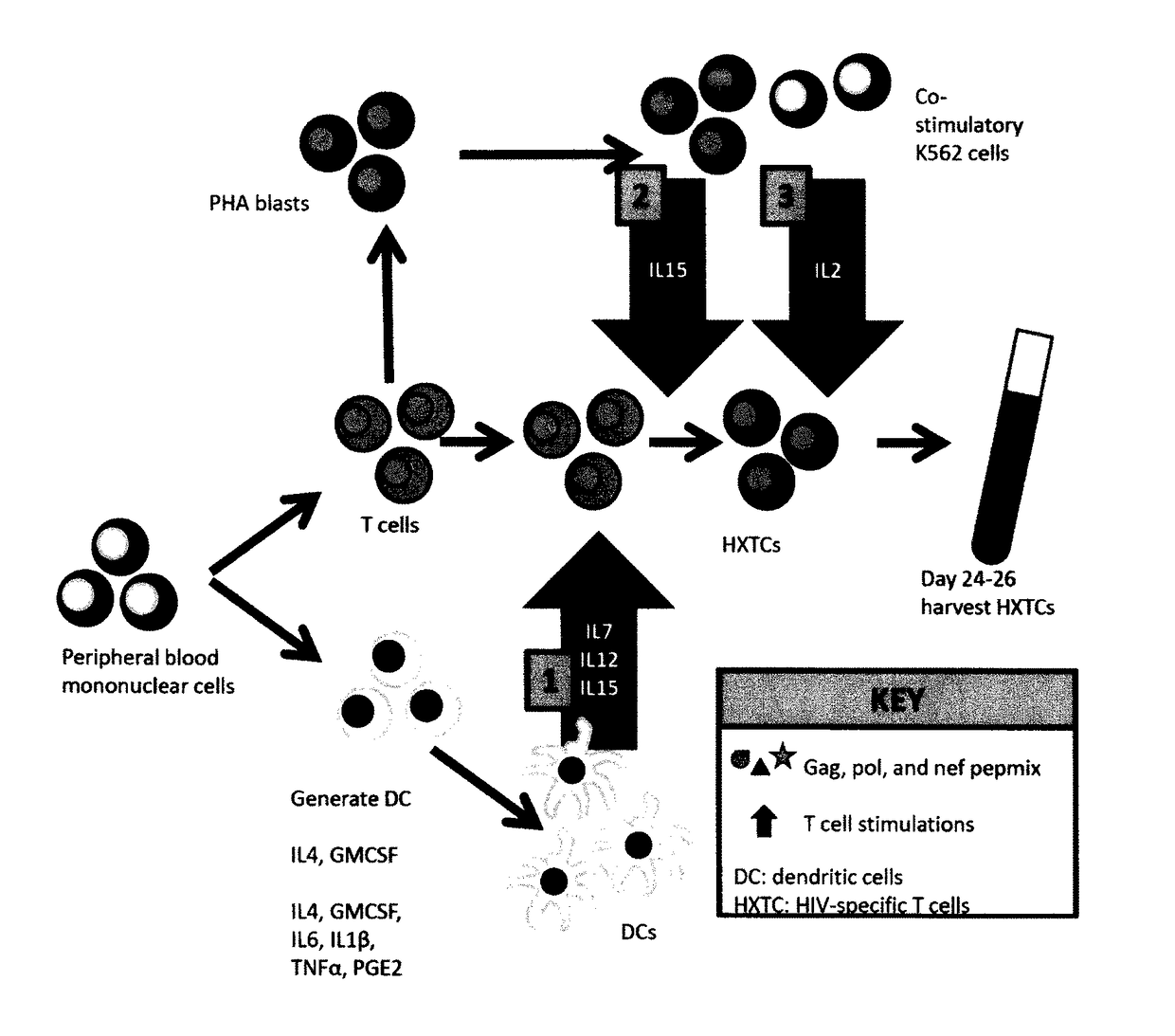Generation of broadly-specific, virus-immune cells targeting multiple HIV antigens for preventive and therapeutic use
a technology of virus-immune cells and antigens, applied in the field of immunotherapy and hiv/aids therapeutics, can solve the problems of increasing the risk of viral escape and subsequent resistance to immunotherapy, limiting the number of targetable hiv infected cells, and only showing safety in the field, so as to improve anti-hiv, antiviral, and/or antitumor capabilities, and facilitate systemic resistan
- Summary
- Abstract
- Description
- Claims
- Application Information
AI Technical Summary
Benefits of technology
Problems solved by technology
Method used
Image
Examples
example
Generation of Virus-Resistant HIV-Specific Cytotoxic T Cells
[0083]Donors
[0084]Blood is collected from HIV-negative and HIV-positive human subjects. Umbilical cord blood is also obtained which is often used as a stem cell source for patients eligible for hematopoietic stem cell transplant. Blood is generally collected in 60 to 100 ml heparinized tubes or EDTA-containing tubes.
[0085]Isolation of Mononuclear Cells
[0086]Peripheral blood mononuclear cells (“PBMCs”) are isolated from the blood of HIV-negative and HIV-positive subjects by density gradient centrifugation. The buffy coat containing PBMCs is removed from sedimented red blood cells and other plasma components and used to produce HIV-antigen specific T-cells. The isolated PBMCs may be preserved for later use by suspension in a cryopreservation medium such as a medium containing fetal bovine serum and dimethylsulfoxide (DMSO) by procedures known in the art.
[0087]Generation of Antigen Presenting Cells
[0088]PBMC were plated on 6 w...
PUM
| Property | Measurement | Unit |
|---|---|---|
| drug resistance | aaaaa | aaaaa |
| resistance | aaaaa | aaaaa |
| systemic resistance | aaaaa | aaaaa |
Abstract
Description
Claims
Application Information
 Login to View More
Login to View More - R&D
- Intellectual Property
- Life Sciences
- Materials
- Tech Scout
- Unparalleled Data Quality
- Higher Quality Content
- 60% Fewer Hallucinations
Browse by: Latest US Patents, China's latest patents, Technical Efficacy Thesaurus, Application Domain, Technology Topic, Popular Technical Reports.
© 2025 PatSnap. All rights reserved.Legal|Privacy policy|Modern Slavery Act Transparency Statement|Sitemap|About US| Contact US: help@patsnap.com

